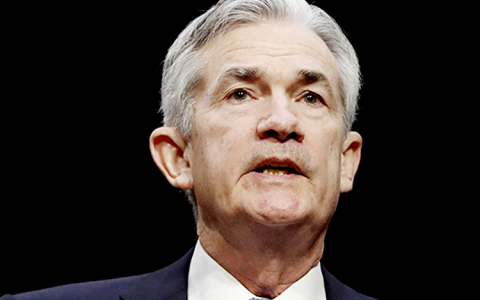
(Yahoo) Federal Reserve Chair Jerome Powell signaled the central bank could hold rates steady at its next policy meeting, but he also warned that inflation was still too high and that more interest rate increases are still possible if the economy stays surprisingly hot.
"Additional evidence of persistently above-trend growth, or that tightness in the labor market is no longer easing, could put further progress on inflation at risk and could warrant further tightening of monetary policy," Powell said Thursday while speaking before the Economic Club of New York.
Powell stressed in his speech that "given the uncertainties and risks, and how far we have come, the committee is proceeding carefully." That was a sign the central bank would not push rates higher at its next meeting in November.
The Fed chair also emphasized that the central bank will cautiously walk the line between doing too much and doing too little. He noted that given the speed with which the Fed has raised rates, there could still be "meaningful tightening" in the pipeline.
In recent days and weeks, other Fed officials in speeches have urged patience and the need to move cautiously as officials evaluate the direction of the economy and the pace of inflation in determining whether to raise rates again.
"Doing too little could allow above-target inflation to become entrenched and ultimately require monetary policy to wring more persistent inflation from the economy at a high cost to employment," he said. "Doing too much could also do unnecessary harm to the economy."
Powell’s comments set the table for the next gathering of the Fed's Federal Open Market Committee on Nov. 1. They also come just days before a 10-day blackout period during which Fed officials are not allowed to make any public statements.
Protesters briefly interrupted the proceedings in Manhattan, and Powell was escorted out for a period of minutes before beginning his speech.
The Fed at its last meeting in September held interest rates steady at a 22-year high while signaling another rate hike will be needed later this year to bring inflation back to its 2% target.
Investors currently expect the central bank to leave its benchmark interest rate unchanged at the November meeting, staying in the range of 5.25%-5.50%.
Powell made it clear Thursday the central bank is closely watching a recent surge in long-term bond yields, which have risen more than 50 basis points since the Fed’s last policy meeting on Sept. 20. Other Fed officials have said in recent days that if long-term interest rates remain elevated there may be less need for the Fed to act.
"We remain attentive to these developments because persistent changes in financial conditions can have implications for the path of monetary policy," Powell said.
When asked during a question-and-answer session whether higher yields could reduce the impetus for the Fed to continue to raise rates at the margin, Powell said, "It could ... that remains to be seen."
He added, “By the way, I'm not blessing any particular level of longer-term rates, but just in principle, that's right."
Powell said as long as bond yields are rising for reasons other than expectations the Fed will increase rates — which he believes to be the case — then that acts as a tightening of financial conditions. And that, he said, is what the Fed is trying to achieve.
Powell also said in his speech that while inflation showed progress over the summer, the data from September was somewhat less encouraging.
He acknowledged that shorter-term measures of core inflation — inflation measures that strip out volatile food and energy prices — over the most recent three and six months are now running below 3%.
"But these shorter-term measures are often volatile," he said. "Inflation is still too high, and a few months of good data are only the beginning of what it will take to build confidence that inflation is moving down sustainably toward our goal."
The job market, he said, remains strong but is also showing signs of gradually cooling. Wage growth, he added, is showing a gradual decline toward levels that would be consistent with 2% inflation over time.



